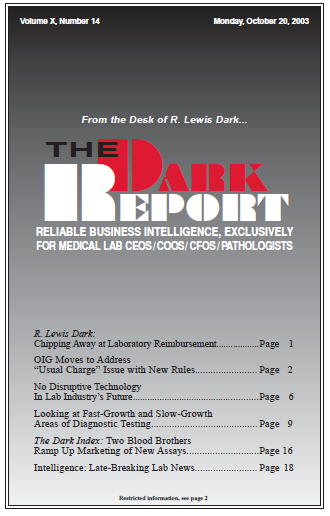CEO SUMMARY: As new diagnostic technologies move through the development pipeline and into widespread clinical use, the scientific knowledge and skill sets needed by laboratory staff and management will change. The emphasis in laboratory medicine will evolve to include more molecular technology, but this evolution will proceed incrementally, giving all laboratories time to adapt. RAPID […]
To access this post, you must purchase The Dark Report.


